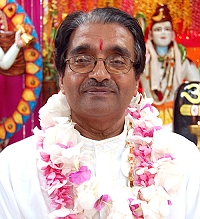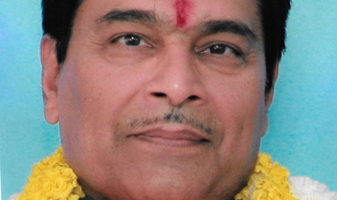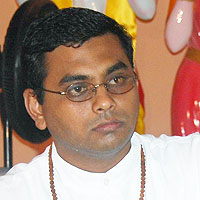From a satsang with Paramacharya of SWAHA, H.H. Pt. Hardeo Persad
The divine cycle of righteousness and unrighteousness unfolds eternally throughout time. Whenever adharma (unrighteousness) gains dominance and dharma (righteousness) wanes, the Supreme manifests to restore balance. This sacred principle, articulated in the Bhagavad Gita, underscores the eternal presence of divine intervention in the cosmic order. It is not a singular occurrence but a cyclical process, repeating itself throughout the ages.
Dharma is the intrinsic framework by which an individual is meant to live. Each person functions within society in various capacities—as a son or daughter, a spouse, a parent, a worker, a guide. Every role comes with responsibilities, and the fulfillment of these duties collectively constitutes one’s dharma. To maintain righteousness, one must strive to uphold these obligations in all aspects of life, recognising the precept that “Work is worship and duty is divine.”
However, in the present age, dharma is on the descent. Festivities such as Ram Navami, once deeply spiritual, have become commercialised and, at times, politicised. We must not identify ourselves with the superficial but rather strive to uphold the essence of dharma with sincerity and self-reflection. Each individual must ask: Do I maintain righteous principles in all circumstances? Do I fulfill my duties with integrity? No one can escape the consequences of their actions—karma is inescapable, and we must be prepared to face its fruits.
An example of steadfast commitment to duty is found in the Ramaayan, where Hanuman encounters Makhardwaj in Patal Lok. Though Makhardwaj was Hanuman’s own son, he remained steadfast in his duty to guard Shree Raam and Lakshman under Ravan’s command. Hanuman, recognising his son’s devotion to duty, did not ask him to move aside. In the end, Makhardwaj was elevated to the status of king, exemplifying that those who uphold dharma are ultimately protected by dharma itself.
The Ramaayan teaches that the Earth can bear the weight of rivers, mountains and vast oceans, yet the burden of a sinner is too much for it. When the Earth is oppressed by unrighteousness and the celestial beings pray for relief, the divine manifests. More than 10,000 years ago, during Chaitra Navraatri, on the ninth day at midday, Shree Raam incarnated in the royal palace of King Dashrath. The Lord manifested in four forms: Shree Raam and his brothers, Lakshman, Bharat and Shatrughan—each representing a spiritual path.
Shree Raam symbolizes Gyaan Yoga, the path of wisdom. Lakshman embodies Dhyaan Yoga, the path of meditation. Bharat personifies Bhakti Yoga, the path of devotion. Shatrughan represents Karma Yoga, the path of selfless action.
These diverse paths lead to the same spiritual destination—oneness with the Divine. Every seeker must contemplate: Which path am I following? The Ramaayan presents two perspectives on Shree Raam’s life—Tatas Lakshan, where he interacts as a man among men, and Swaroop Lakshan, where he reveals his divine nature. Similarly, we too exist in duality. Our external self (Tatas Lakshan) engages with the material world, while our inner self (Swaroop Lakshan) holds the divine spark. The body is likened to Ayodhya, and within it, the spirit of Shree Raam must be awakened.
Bharat, representing Bhakti Yoga, signifies the purified consciousness (chit) that transcends the material mind. Through devotion, the mind (manas) merges into the intellect (buddhi); the intellect merges into the ego (ahankaar) and leads one towards spiritual purity of consciousness.
Lakshman, as the embodiment of Dhyaan Yoga, reminds us of the eightfold path of Ashtanga Yoga—disciplining the mind and body to reach enlightenment.
Shatrughan, through Karma Yoga, teaches the principle of selfless action. Our actions bind us to the cycle of birth and death, but through Sharanaagati (surrender to the Divine), all karmic burdens can be dissolved. This surrender is achieved through six essential practices: following divine injunctions, avoiding prohibitions, unwavering faith in God, humility, self-surrender and absolute dependence on the Divine.
The ultimate goal is freedom from bondage. Every individual must ask: What pathway am I on? Self-effort is the cornerstone of spiritual progress. Just as a lamp requires continuous refueling, so too must we nurture our spiritual growth. Ram Navami is not merely a celebration of Shree Raam’s birth but a call to awaken the divinity within. Our body, like Ayodhya, must welcome Shree Raam—the pure and luminous spirit within.
When spirituality is enthroned in the heart, as Shree Raam is crowned in Ayodhya, then perfection is realised. This is the utopian state where divine harmony prevails. The flame of Shree Raam’s presence burns within each of us, concealed by layers of material distractions. Our task is to remove these veils, allowing the divine light to shine forth.
Shree Raam Sharanam Mama—May we seek refuge in Shree Raam, allowing our atma to merge with Paramatma. When we internalise the wisdom of the scriptures and live by its principles, righteousness prevails, and dharma is reestablished in our lives and in the world.




Leave a Reply